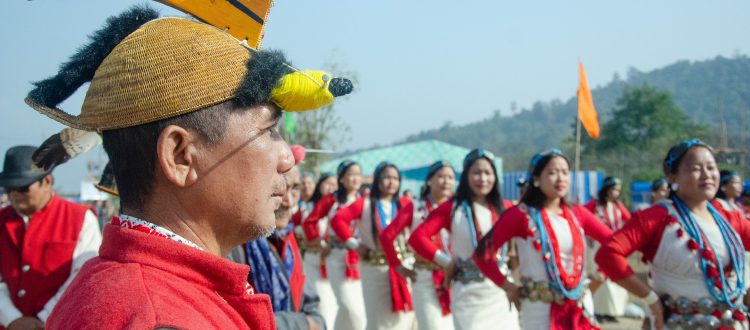27
Jan
Celebrating Conservation: The way of the Paga
0 Comment
It’s not every day that you get the opportunity to sit among Nyishi elders and listen to their stories of becoming. So when a fireside chat with the community regaled our project team with stories, I sought to probe deeper into their traditional headgear that fascinated me ever since I had read about WTI’s conservation milestone. A tribe known for their hunting and fighting skills, a Nyishi is easily identified by his elaborate headgear, the pudum. Featuring a hornbill beak, the pudum is however an identity that doesn’t come easy. Not every Nyishi gets to wear it and those who do, protect it with their life.
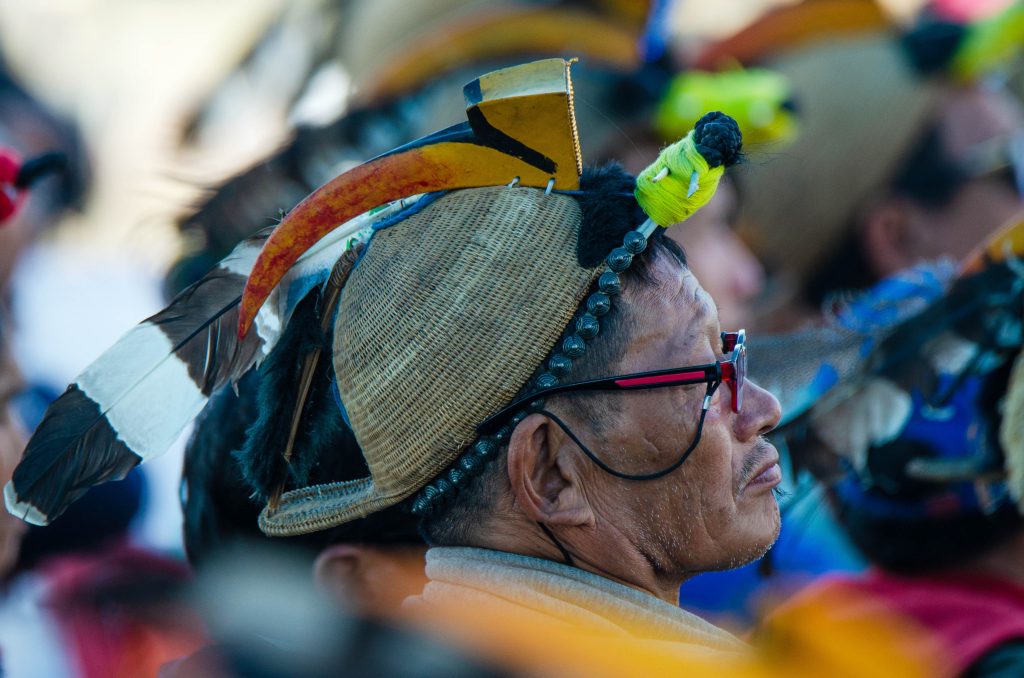
A Gaon Budha (Village Elder) at Pakke Paga Hornbill Festival 2023 | Photograph by Madhumay Mallik/WTI
Tajang Tachang, a Gaon Burah (Village Elder) has been wearing one for more than 60 years now. It’s a symbol of pride. Topu Tok, a local from Bali Basti, a Nyishi hamlet, explains, “Our pudum is much more than a headgear. If you want to defeat a Nyishi, all you need to do is to cut the extension of the pudum, usually the bun of your hair, tied in front of the headgear. A Nyishi man without a complete pudum has no identity”.
The hornbill beak on the headgear symbolizes the man’s commitment to his partner. Just like hornbills, who mate for life, it’s a symbol of love for the Nyishi man. They stay true to their pudum and to their partner. The straw base of the headgear comes finely woven, symbolizing finesse in life. Apart from these, the pudum will also feature feathers from different birds. An eagle feather, to symbolise leadership and far-sightedness will usually be sported by the tribal leader. Similarly, a racket-tailed drongo feather will symbolize the bearer’s purity and lucidness. Nyishi men are free to choose the feather for their pudum, depending on their personality. It could be feathers of peacock pheasant, peacock or eagle owl. However, what remains constant, is the hornbill beak.
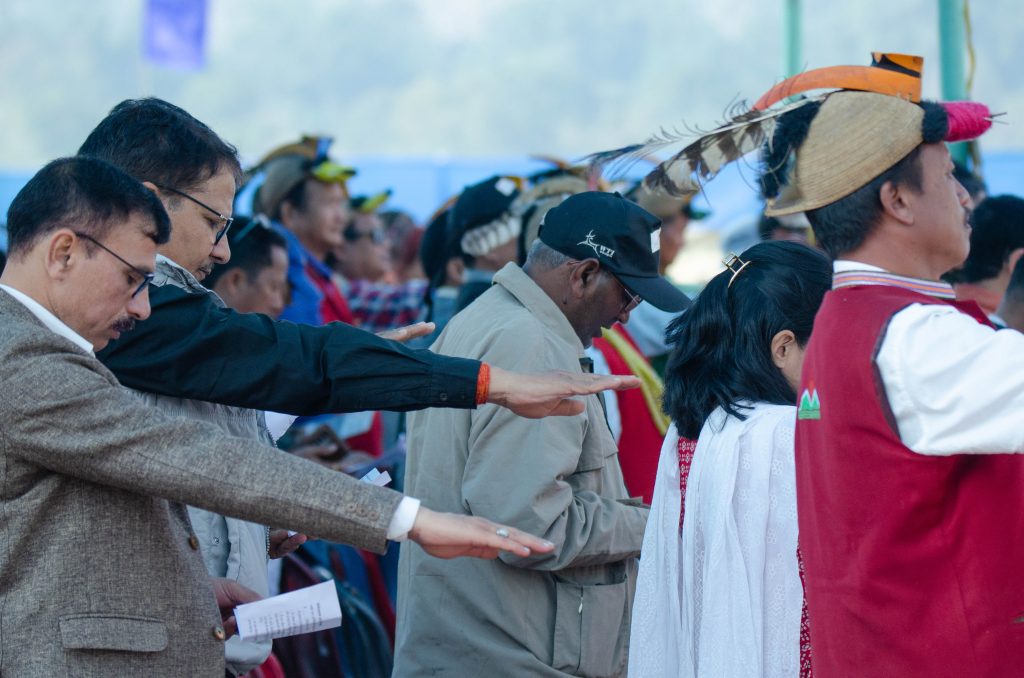
Local community pledging to protect the Paga | Photograph by Madhumay Mallik/WTI
For each adult Nyishi, there once used to be a hornbill that was sacrificed. Until a series of Rapid Action Projects by WTI introduced the community to artificial beaks. It’s encouraging how such a primitive tribe, with a stringent set of customs and beliefs, were open to the idea of fiberglass beaks. Today, the Nyishi understands why hornbills need to be saved. “If symbolism can be attained without the slaughter of such a beautiful bird, there’s no reason why we shouldn’t agree to it,” says Tajang Tachang, who replaced his in 2010.
This is what conservation action is about and this is worth celebrating!
There’s so much I bring back from this year’s Pakke Paga Hornbill Festival. There were so many stigmas that were broken. The highlight of the event was a drama by students about hunters laying down their arms and making peace with nature and wildlife. It was overwhelming to experience the unanimous applause and from a community that is believed to sustain on hunting.
A land of 26 major tribes and hundreds more sub-tribes, the state of Arunachal Pradesh lies in one of the most bio-diverse regions of the world. It’s forest cover of more than 75% is among the highest for any Indian state. This also means that life here is completely reliant on the forests and forest-based resources. As the Honb. Forest Minister, Shri. Mama Natung, aptly points out, “these jungles are here because of the wildlife it hosts. It’s the hornbills, the bears and other species who are the makers of these jungle and without them, we stand the risk of losing our rivers and the supporting ecosystem.”
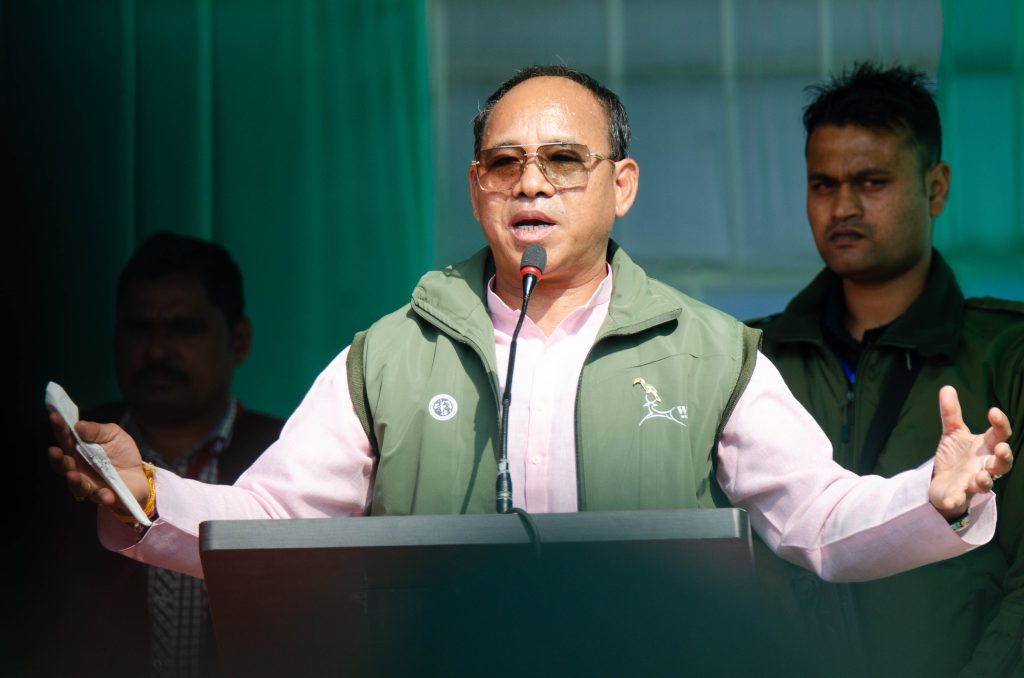
Shri Mama Natung, Honb. forest Minister of Arunachal Pradesh addressing the audience at PPHF 2023 | Photograph by Madhumay Mallik/WTI
Coming from the head of the ministry, who also lauds the recent surrender of about 2200 air guns from across the state, it’s encouraging how communities are open to tweaking their culture, for the sake of conservation. After all, it is the local communities who have been the protectors of these forests for centuries and continue to be so.
A three-day event, the Pakke Paga Hornbill Festival saw the coming together of several tribes to celebrate the Paga (the hornbill) through music, dance, drama, games and dress-up. Gathering on the banks of Pakke River, the community pledged to ‘do anything in their power to protect wildlife’, and pushing the state of Arunachal Pradesh to its revered glory. Coming from people who adorn commitment as an identity, it certainly gives a lot of hope for the future of the Paga and the wildlife of Arunachal.
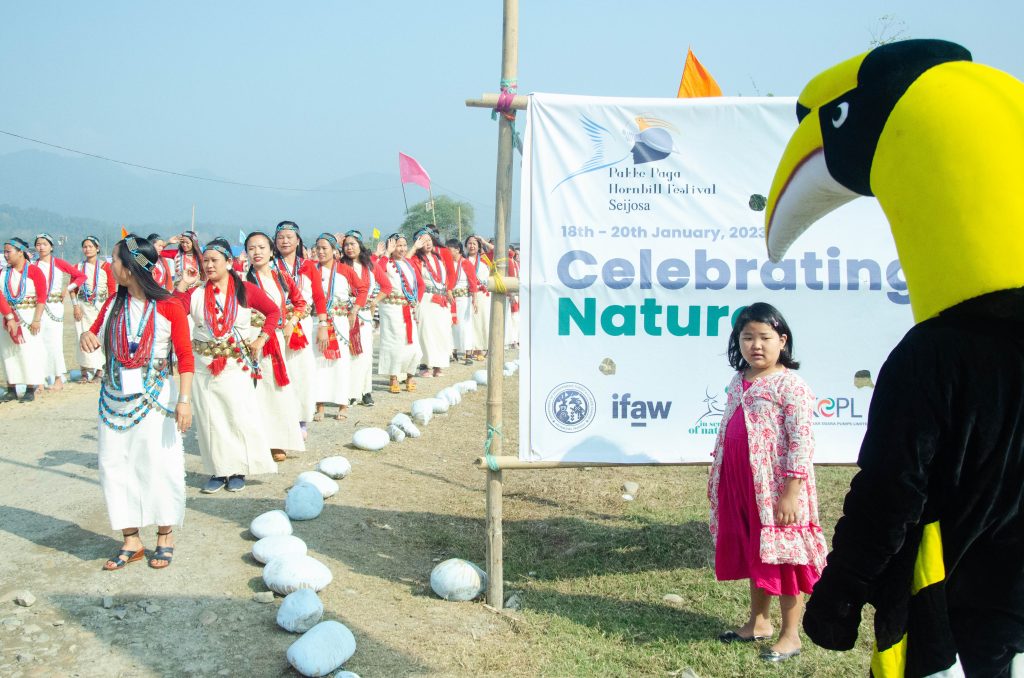
Pakke Page Hornbill Festival 2023 celebration | Photograph by Madhumay Mallik/WTI
Wildlife Trust of India, as the conservation partner in the Pakke Paga Hornbill Festival 2023, is supported by DoEFCC (Arunachal Pradesh), the International Fund for Animal Welfare (IFAW) and Kirloskar Ebara Pumps Limited (KEPL). Back in 2001, WTI started campaigning to replace original hornbill beaks with fiberglass ones in the traditional headgear. In 2023 Pakke Paga Festival, I didn’t see a single Nishi who sported a real hornbill beak on his pudum.
Now, that is a win!
by Madhumay Mallik

